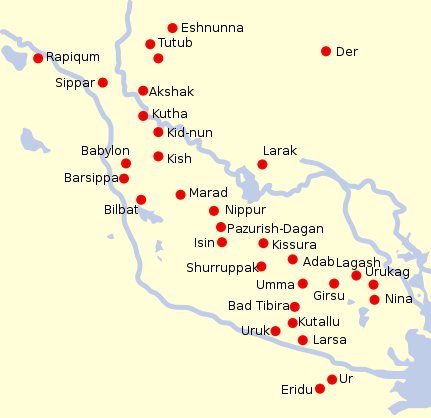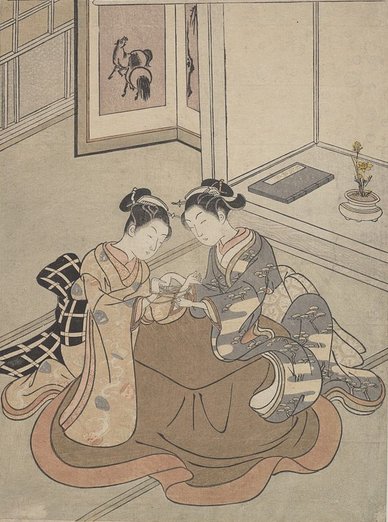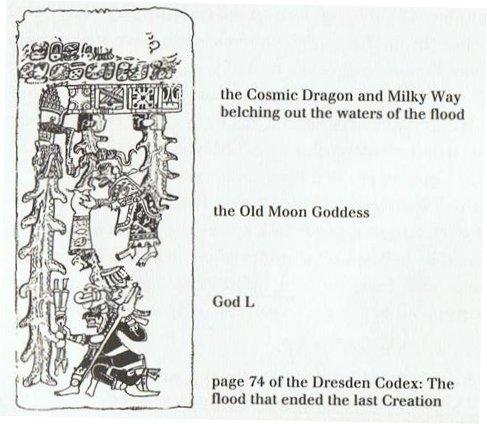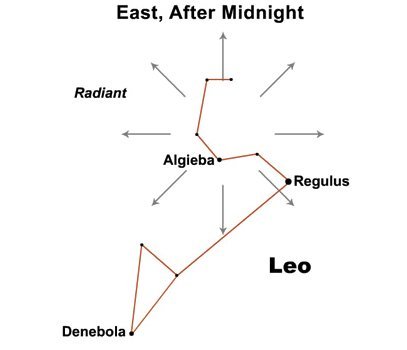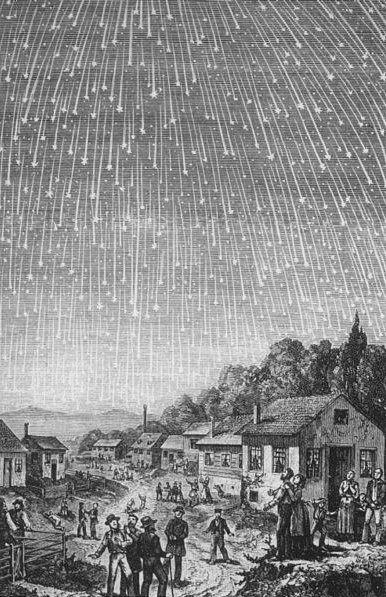The Fig-tree where the Raven had loitered was presumably a reference to Canopus: ... The Mesopotamian cylinder seal shows in the upper part the 'God Boat'; in the lower part people are building a ziggurat, the proposition being that the boat is bringing the me from Eridu-Canopus, the measures of creation ... .jpg) ... The Pythagoreans make Phaeton fall into Eridanus, burning part of its water, and glowing still at the time when the Argonauts passed by. Ovid stated that since the fall the Nile hides its sources. Rigveda 9.73.3 says that the Great Varuna has hidden the ocean. The Mahabharata tells in its own style why the 'heavenly Ganga' had to be brought down. At the end of the Golden Age (Krita Yuga) a class of Asura who had fought against the 'gods' hid themselves in the ocean where the gods could not reach them, and planned to overthrow the government. So the gods implored Agastya (Canopus, alpha Carinae = Eridu) for help. The great Rishi did as he was bidden, drank up the water of the ocean, and thus laid bare the enemies, who were then slain by the gods. But now, there was no ocean anymore! Implored by the gods to fill the sea again, the Holy One replied: 'That water in sooth hath been digested by me. Some other expedient, therefore, must be thought of by you, if ye desire to make endeavour to fill the ocean ...
... This [η
Carinae] is one of the most
noted objects in the heavens,
perhaps even so in almost
prehistoric times, for
Babylonian inscriptions seem to
refer to a star noticeable from
occasional faintness in its
light, that Jensen thinks was
η. And
he claims it as one of the
temple stars associated with Ea,
or Ia, of Eridhu¹, the Lord of
Waters, otherwise known as
Oannes², the mysterious human
fish and greatest god of the
kingdom.
¹ Eridhu, or
Eri-duga, the Holy City, Nunki,
or Nunpe, one of the oldest
cities in the world, even in
ancient Babylonia, was that
kingdom's flourishing port on
the Persian Gulf, but, by the
encroachment of the delta, its
site is now one hundred miles
inland. In its vicinity the
Babylonians located their sacred
Tree of Life.
² Berōssōs
described Oannes as the teacher
of early man in all knowledge;
and in mythology he was even the
creator of man and the father of
Tammuz and Ishtar, themselves
associated with other stars and
sky figures. Jensen thinks
Oannes connected with the stars
of Capricorn; Lockyer finds his
counterpart in the god Chnemu of
Southern Egypt; and some have
regarded him as the prototype of
Noah ...
... They went on
and came to Tama. They looked
around and said, 'This is Tama.'
They gave the name 'Tama, an
evil fish (he ika kino),
a very long nose (He ihu
roroa).' Again they went on
and came to One Tea. They saw
it, looked around, and gave the
name 'One Tea A Hau Maka'. Then
they went on and came to Hanga
Takaure. There they gave the
name 'Hanga Takaure A Hau Maka'.
They made camp and rested at the
Bay of Flies for a week (etahi
pohitu). On the eighteenth
day of the month of July
('Anakena'), they went on from
Hanga Takaure. [E:23]
*301.0 = *342.4 - *41.4 ...
The letter shape
ultimately goes back
to a hieroglyph for
'courtyard' ...
possibly named
hasir in the
Middle Bronze Age
alphabets, while the
name goes rather
back to
hayt, the
name reconstructed
for a letter derived
from a hieroglyph
for 'thread'
... The kaikai
are the rythmic
songs that are sung
to cat's cradles,
the string games
that are found not
only throughout the
Pacific but
throughout the
world. On
premissionary
Rapa Nui the
kaikai, together
with their
corresponding cat's
cradles, were not
simple children's
games but were used,
among other things,
to produce magic
effect. They were
highly important for
the study of Rapa
Nui's
rongorongo. This is
because it was
apparently with the
aid of cat's cradles
that the rongorongo
experts taught their
pupils to learn many
of the chants
accompanying the
incised inscriptions
...
... string games
could be resumed
after it was clear
that the Sun had
managed to leave the
horizon and was
rapidly gaining in
altitude: 'Before
the sun starts to
leave the horizon
... when it shows
only on the horizon,
... then string
games were no longer
allowed as they
might lacerate the
sun. Once the sun
had started to go
higher and could be
seen in its
entirety, string
games could be
resumed, if one so
wished. So the
restriction on
playing string games
was only applicable
during the period
between the sun's
return and its
rising fully above
the horizon
...
We can see there was no more any flow of waters at Eridu:
The Milky Way River began at the Cargo Boat to end half a year later far down in the vicinity of Eridu (where the Tree of Life was growing).
Since the golden age of the Bull the precession had carried the stars ahead with around 8 * 8 right ascension days. The Mouth of the Fish was no longer at the Full Moon in DECEMBER 29 (300 + 63) but in the night of March 1 (61 = 363 + 64 - 366). 61 + 183 = 244 (September 1).
The creator of the C text seems to have correlated the beginning of Moon with the beginning of Sun. By doing so he elegantly avoided the problems caused by February 24 and February 29 (which sometimes should be there and sometimes not - like Mercury). ... The leap day was introduced as part of the Julian reform. The day following the Terminalia (February 23) was doubled, forming the 'bis sextum - literally 'double sixth', since February 24 was 'the sixth day before the Kalends of March' using Roman inclusive counting (March 1 was the 'first day'). Although exceptions exist, the first day of the bis sextum (February 24) was usually regarded as the intercalated or 'bissextile' day since the third century. February 29 came to be regarded as the leap day when the Roman system of numbering days was replaced by sequential numbering in the late Middle Ages ... ... This [η Carinae] is one of the most noted objects in the heavens, perhaps even so in almost prehistoric times, for Babylonian inscriptions seem to refer to a star noticeable from occasional faintness in its light, that Jensen thinks was η. And he claims it as one of the temple stars associated with Ea, or Ia, of Eridhu, the Lord of Waters, otherwise known as Oannes, the mysterious human fish and greatest god of the kingdom ... ... Ganz ähnlich is der Name 'Gott von Duazag' des Gottes Nabū ... zu erklären. Er bezeichnet ihn als den Gott des Wachtstums, welches als aus dem Osten stammend betrachtet wird, weil die Sonne, die das Wachstum bringt, im Osten aufgeht. Dass aber Nabū als Ost-Gott aufgefasst wurde, hängt damit zusammen, dass sein Stern, der Mercur, nur im Osten oder Westen sichtbar ist ...
... Another name for Mercury was Hermes and Hermes Trismegisthos (thrice-mighty) could have referred to the fact that there were 3.14 * 115.88 = 364.0 days for the cycle of the Earth around the Sun. Although the calendar has 365 days for a year this is due to the fact that the Earth has to turn around an extra day in order to compensate for how the direction to the Sun changes during a year ...
|
||||||||||||||||||||||||||||||||||||||||||||||||||||||||||||||||||||||||||||||||||||||||||||||||||||||||||||||||||||||||||||||||||||||||||||||||||||||||||||||||||||||||||||||||||||||||||||||||||||||||||||||||||||||||||||||||||||





